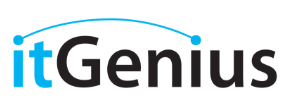In the evolving landscape of remote work, ensuring your team has the right technology is crucial for peak performance. While sometimes underperformance can be attributed to individual issues, often it's the technology at their disposal that's the limiting factor. This blog explores how to equip your remote team with the right tech tools to enhance productivity and efficiency.
Understanding the Shift to Cloud-Based Work
The transition from traditional server-based operations to cloud-based systems has significantly altered our work environment. The new norm involves working primarily in the cloud, with tasks and applications accessible through a browser. This shift has led to a change in the hardware requirements for efficient work, especially as many employees now use personal devices like Macs for both home and work.
The Importance of Adequate Hardware
Despite the cloud-centric work environment, having powerful hardware remains essential. This is particularly true as most employees use Google Chrome, which is known for consuming significant RAM, especially with multiple tabs open. To ensure smooth operation, it's crucial to provide hardware that can handle these demands.
Creating User Profiles for Hardware Allocation
To effectively manage hardware needs, it's advisable to create user profiles based on different roles within the organization:
- Power Users: This group includes executives and anyone needing to perform graphics-intensive tasks. They require robust hardware, ideally with at least 16 or 32 GB of RAM, an i7 processor, and a solid-state drive. A wired internet connection is also preferable to minimize latency.
- Standard Users: These are your general workforce who don't fall into the power user category. An i5 processor with 8 GB of RAM (4 GB for Chrome devices) is typically sufficient. While solid-state drives are not mandatory, they are recommended for better performance.
- Special Users: This category covers roles with unique requirements, such as field workers or contractors. Their hardware needs should be tailored to their specific job functions.
Conducting an Audit and Setting Policies
Before purchasing new hardware, conduct an audit to understand the current landscape of devices in your organization. This involves checking the specifications of existing hardware and then categorizing your team members into the defined user profiles. This approach helps in creating a systematic hardware policy for your company.
Leveraging Google Workspace for Device Management
Google Workspace allows for the management of Chrome devices and mobile devices connected to your account. You can set policies for device usage, security settings, and manage a fleet of mobile devices efficiently. This is particularly useful for ensuring that all devices comply with your organization's security and operational standards.
Equipping your remote team with the right technology is not just about providing the latest gadgets. It's about understanding their roles, the demands of those roles, and then matching the hardware to those needs. By categorizing your team into different user profiles and conducting regular audits, you can ensure that everyone has the tools they need to be productive and efficient.
Stay informed and enhance your team's productivity with our insights on technology and remote work. Subscribe for more content, and if you're looking for personalized advice on optimizing your tech stack, consider our free consultation services or join our IT Genius community for ongoing support.




